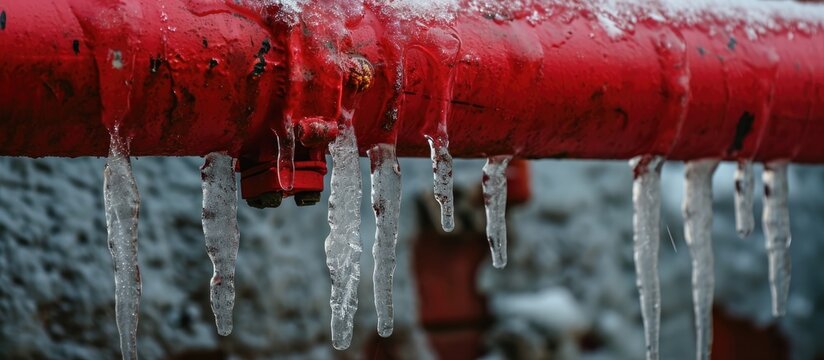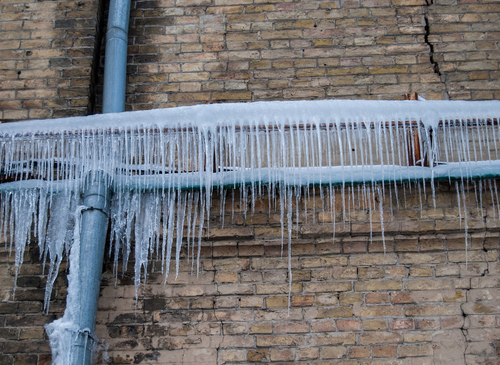Guidance for Avoiding Frozen Pipes in Winter: Specialist Insights
Guidance for Avoiding Frozen Pipes in Winter: Specialist Insights
Blog Article
Just about every person may have their own unique rationale in relation to Helpful Tips to Prevent Frozen Pipes this Winter.

Winter can ruin your plumbing, specifically by freezing pipes. Right here's how to prevent it from taking place and what to do if it does.
Intro
As temperature levels decrease, the threat of icy pipelines rises, potentially resulting in costly repair services and water damage. Comprehending how to prevent frozen pipes is important for home owners in cold environments.
Avoidance Tips
Shielding at risk pipes
Wrap pipes in insulation sleeves or make use of heat tape to secure them from freezing temperature levels. Concentrate on pipes in unheated or outside locations of the home.
Heating techniques
Keep interior areas properly heated, specifically locations with pipes. Open up cupboard doors to enable warm air to circulate around pipes under sinks.
Just how to identify frozen pipelines
Seek decreased water circulation from faucets, uncommon smells or noises from pipes, and noticeable frost on exposed pipes.
Long-Term Solutions
Architectural modifications
Take into consideration rerouting pipelines far from exterior walls or unheated areas. Add additional insulation to attics, basements, and crawl spaces.
Upgrading insulation
Invest in high-quality insulation for pipelines, attics, and wall surfaces. Proper insulation aids maintain regular temperature levels and minimizes the danger of frozen pipes.
Safeguarding Outside Plumbing
Yard hose pipes and outside faucets
Disconnect and drain pipes garden hose pipes before winter months. Set up frost-proof faucets or cover outdoor taps with protected caps.
Understanding Frozen Pipelines
What triggers pipes to freeze?
Pipes freeze when subjected to temperature levels listed below 32 ° F (0 ° C) for prolonged durations. As water inside the pipelines freezes, it increases, putting pressure on the pipeline wall surfaces and potentially creating them to burst.
Dangers and problems
Frozen pipelines can result in water system disruptions, property damage, and pricey repair work. Ruptured pipelines can flooding homes and trigger substantial architectural damage.
Indications of Frozen Pipeline
Recognizing icy pipelines early can prevent them from breaking.
What to Do If Your Pipelines Freeze
Immediate activities to take
If you presume frozen pipes, maintain faucets available to alleviate pressure as the ice thaws. Utilize a hairdryer or towels taken in hot water to thaw pipelines gradually.
Conclusion
Avoiding icy pipes calls for proactive steps and quick responses. By recognizing the reasons, signs, and preventive measures, property owners can shield their pipes during cold weather.
5 Ways to Prevent Frozen Pipes
Drain Outdoor Faucets and Disconnect Hoses
First, close the shut-off valve that controls the flow of water in the pipe to your outdoor faucet. Then, head outside to disconnect and drain your hose and open the outdoor faucet to allow the water to completely drain out of the line. Turn off the faucet when done. Finally, head back to the shut-off valve and drain the remaining water inside the pipe into a bucket or container. Additionally, if you have a home irrigation system, you should consider hiring an expert to clear the system of water each year.
Insulate Pipes
One of the best and most cost-effective methods for preventing frozen water pipes is to wrap your pipes with insulation. This is especially important for areas in your home that aren’t exposed to heat, such as an attic. We suggest using foam sleeves, which can typically be found at your local hardware store.
Keep Heat Running at 65
Your pipes are located inside your walls, and the temperature there is much colder than the rest of the house. To prevent your pipes from freezing, The Insurance Information Institute suggests that you keep your home heated to at least 65 degrees, even when traveling. You may want to invest in smart devices that can keep an eye on the temperature in your home while you’re away.
Leave Water Dripping
Moving water — even a small trickle — can prevent ice from forming inside your pipes. When freezing temps are imminent, start a drip of water from all faucets that serve exposed pipes. Leaving a few faucets running will also help relieve pressure inside the pipes and help prevent a rupture if the water inside freezes.
Open Cupboard Doors
Warm your kitchen and bathroom pipes by opening cupboards and vanities. You should also leave your interior doors ajar to help warm air circulate evenly throughout your home.

Do you really like reading about How to prepare your home plumbing for winter weather? Write a remark below. We'd be delighted to know your ideas about this piece. In hopes that you visit us again in the future. Liked our blog? Please quickly share it. Let someone else discover it. Thanks a lot for taking the time to read it.
Click Here Report this page